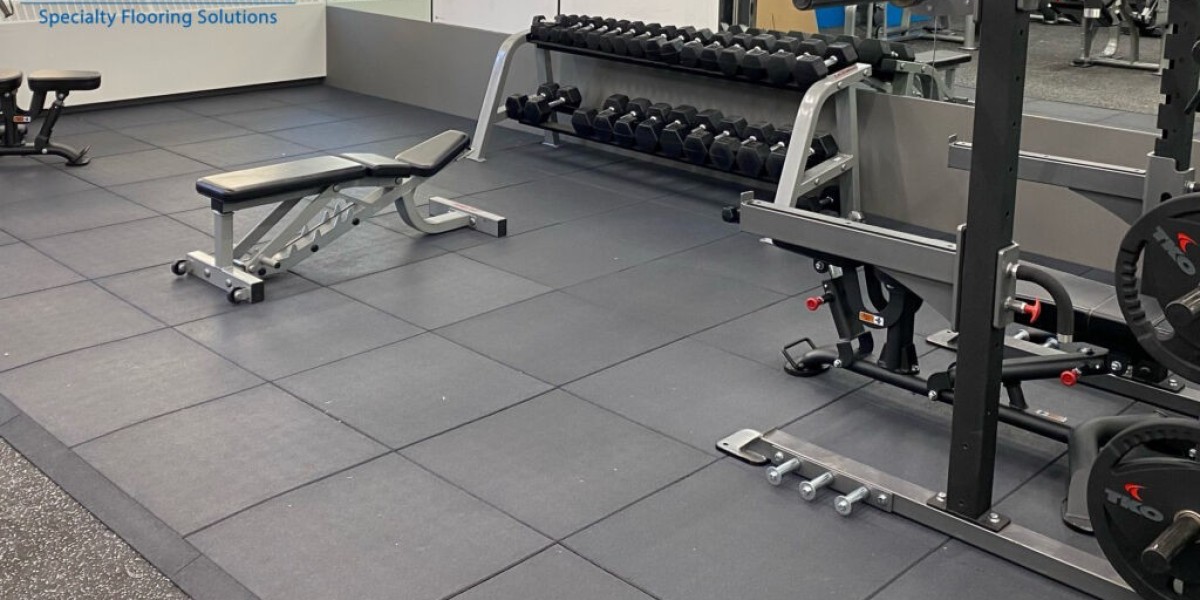Keeping your home gym floor tiles in optimal condition is essential, especially in high-traffic areas. Proper maintenance not only prolongs the life of your tiles but also ensures a safe and hygienic exercise space. Here’s a detailed guide on how to care for your home gym floor tiles effectively.
Understanding Home Gym Floor Tiles
Home gym floor tiles come in various materials, each with distinct characteristics and maintenance needs:
Rubber Tiles: Known for their durability and shock absorption, making them ideal for high-impact workouts.
Foam Tiles: Soft and cushioned, perfect for activities like yoga or stretching.
Vinyl Tiles: Low-maintenance and moisture-resistant.
Cork Tiles: Eco-friendly with a natural look.
Regular Cleaning Routine
Daily Maintenance: Sweep your tiles daily with a soft-bristle broom or use a vacuum cleaner with a gentle brush attachment to remove dirt, dust, and debris. This helps prevent scratches and damage.
Weekly Cleaning: Mop your tiles weekly using a mild detergent diluted in warm water. Avoid harsh chemicals or abrasives. Rubber and vinyl tiles can be cleaned with a mixture of mild soap and water. For foam tiles, use a damp cloth with mild detergent to prevent warping.
Spot Cleaning: Address spills and stains immediately to prevent them from setting. Use a damp cloth with a gentle cleaner for most tiles. For persistent stains, opt for a non-abrasive cleaner suitable for the tile material.
Preventive Measures
Use Mats and Rugs: Place mats or rugs in high-traffic areas and under equipment to minimize wear and catch spills or debris.
Avoid Harsh Chemicals: Refrain from using strong cleaning agents like bleach or ammonia. Choose pH-neutral cleaners or those recommended by the tile manufacturer.
Protect from Excessive Moisture: Prevent mold and mildew by avoiding excess moisture. Clean up any spills promptly. Be especially cautious with foam tiles to avoid damage and odor.
Addressing Wear and Tear
Inspect Regularly: Check your floor tiles for signs of wear, such as cracks or loose edges. Early detection of minor issues can prevent more significant problems.
Repair or Replace: Repair or replace damaged tiles as needed. Rubber or vinyl tiles can often be replaced individually, while foam tiles may need to be replaced if they become excessively worn.
Refinishing: Some materials, like cork or vinyl, may require periodic refinishing to maintain their appearance and functionality. Follow the manufacturer’s guidelines for appropriate refinishing products and techniques.
Special Considerations
Temperature and Humidity: Extreme temperatures and humidity can affect tile integrity. Ensure proper ventilation and a stable temperature to avoid expansion or contraction of the tiles.
Avoid Heavy Equipment Scratches: Lift heavy equipment rather than dragging it to prevent scratches or dents. Use furniture pads under equipment legs to distribute weight evenly.
Prevent Staining: Be cautious with substances that can cause stains, such as oils or colored drinks. Use coasters or mats to protect the flooring from potential stains.
Eco-Friendly Maintenance Tips
For cork or recycled rubber tiles, consider eco-friendly cleaning products like biodegradable or plant-based cleaners. Natural fiber mats can also be a sustainable choice for protecting your floor tiles.
Summary
Proper maintenance of home floor gym tiles involves regular cleaning, preventive measures, and timely repairs. By following these guidelines, you can ensure your gym flooring remains in excellent condition, providing a safe and effective workout environment. Tailor your maintenance routine to the specific material of your tiles, whether rubber, foam, vinyl, or cork, to maximize their lifespan and keep your home gym in top shape.







